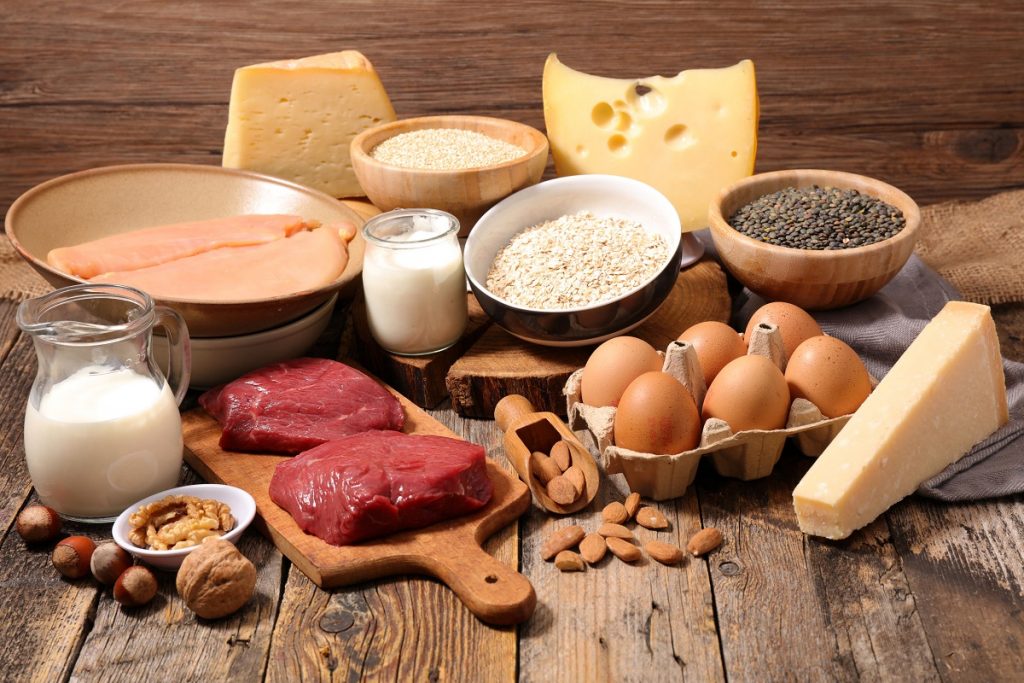You don’t have to be a starry-eyed greenie or an aging hippie with peace signs on your old VW to jump on the organic meat and dairy bandwagon. Although the U.S. Department of Agriculture and Food and Drug Administration are lagging behind because of the undeniable need for large-scale, lower-cost food production both in the U.S. and in other countries, along with what they believe to be still-inadequate scientific studies on the superiority of organically produced foods and the remote likelihood of a sea-change in American agricultural practices, the evidence thus far of the benefits of organic meat, dairy, and egg products is very compelling.
What qualifies as organic meat, dairy, and egg products? They must meet four criteria:
- The producing animals have not been treated with antibiotics, growth hormones, or feed made from animal byproducts.
- They must have been fed organic feed for at least a year.
- They must have daily access to the outdoors to graze.
- The foods they produce cannot be genetically modified or irradiated.
Although there are several reasons for concern about foods produced by conventionally raised animals, at least two stand out as major causes for alarm: antibiotic resistance and declining nutrient levels.
Antibiotic resistance
The most urgent problem is antibiotic resistance in humans. In fact, the British Medical Association predicts that antibiotic resistance will be one of the major public health threats of the 21st century. Antibiotic resistance results from the ever-increasing ability of bacteria to survive the onslaught of traditional antibiotics that have always been the standard weapons in the arsenal against bacterial infections.
Although blame for the situation has been placed squarely on the shoulders of over-prescribing doctors and impatient patients who clamor for medicine for their illnesses, most experts are now also blaming current farming practices. Why? Because antibiotics are used extensively with entire herds and flocks of farm animals to prevent illnesses from spreading.
Indeed, an Australian study has estimated that up to 60 percent of the antibiotics prescribed in that country have been for farm animals. The Mayo Clinic asserts a direct link between antibiotic use in farm animals and antibiotic resistance in humans.
Even the World Health Organization has called for reduced use of antibiotics for farm animals. If an organically raised animal becomes ill, it will be isolated until it is completely well and any antibiotics it was given are out of its system.
What does indiscriminate use of antibiotics mean for unwary consumers? It means that when they enjoy an ice cream cone, eat barbecued pork, or make scrambled eggs for their kids, for example, they are ingesting low levels of the antibiotics that were given to the producing animals — dairy cows, beef cows, swine, or poultry — along with unpleasant traces of infections from ill animals.
The situation goes from bad to worse when the same people pick up random bacteria at school or at work that can cause, for instance, an ear infection. They visit their physician, who has good reason to prescribe the usual antibiotics, but this time that drug isn’t the cure that it may have been a year ago, and something different must be used.
Case in point: MRSA, or methicillin-resistant Staphylococcus aureus, staph for short. This strain of bacteria is resistant to broad-spectrum antibiotics.
WebMD.com reports research results estimating almost five deaths for every 100 hospital patients treated for the superbug infection in the U.S., a number far exceeding earlier estimates. The site also reports that according to studies done by the Centers for Disease Control, out of 94,000 cases of MRSA infections in 2005, almost 19,000 were fatal, exceeding the same year’s death toll from AIDS.
Declining nutrient levels
Official food composition tables, including data compiled by the U.S. Department of Agriculture, reveal that since the 1940s the mineral levels in fruits, vegetables, meat and dairy have declined substantially in conventionally produced foods. And according to a recent British analysis of government nutrition data comparing meat and dairy products from the 1930s and from 2002, the essential mineral content of milk, cheese and beef — including magnesium, calcium, iron, and copper — declined as much as 70 percent.
Some refer to these products as “hollow food”. The major side effect of a steady diet of nutrient-poor food is that people may be eating more in order to get the nutrition they need, which contributes to the rapid rise in obesity among Americans.
Because organically raised animals are fed a nutrient-rich diet, they in turn offer the same benefits to consumers. If you knew your kids only needed one hamburger to load up on vitamins, minerals and other necessary nutrients, you may decide to rethink portion sizes, which would allow your food dollars to stretch further.
If large numbers of people did the same thing, obesity levels would drop at the same time that nutrition levels rise. Kids and their families would have no pesticides or antibiotics in their systems. It’s even possible that better health might become epidemic.

